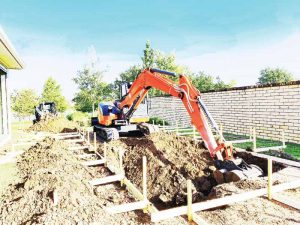Editor’s note: This is a summary of our 14th annual industry survey and our 44th annual report on the state of the Canadian pool industry, including statistical information and market analysis. Information is based on Pool & Spa Marketing’s reader survey results, as well as Statistics Canada’s building permit records for swimming pools, with an overview of new pool permits for census metropolitan areas (CMAs). The figures are conservative and do not reflect many of the rural areas that do not require building permits for pool construction. 
By Jason Cramp
Over the last few years, the pandemic significantly impacted the way people spend their leisure time, and for many, that has meant investing in their homes—in particular, backyards. For the pool industry, this meant a 44.8 per cent increase in permit registrations between 2019 and 2020, and an additional 22.5 per cent increase between 2020 and 2021. Over the course of these two years, 40,890 permits were registered, which was more than the number of registrations in the three years prior (2017 to 2019).
In 2021, many builders had substantial increases in gross sales and expected the same for the 2022 season. In fact, depending on where a builder was located, the demand for pools that year alone saw many builders with packed schedules for new construction heading into 2023. Some even expected to be sold out by July/August of the 2022 season.
The tipping point
There are two sides to every coin, however. Due to the pandemic, one of the biggest challenges faced by the industry has been the shortage of workers and supply chain disruptions which, in some cases, caused delays in the delivery of pool equipment and materials, making it difficult for companies to meet customer demand.
Further, many companies have experienced price increases for materials due to supply chain disruptions and a decrease in availability. These challenges have led to longer lead times for the completion of pool projects and increased costs for both the industry and consumers. Similar to many other markets, the pool industry needed to adapt to find new ways of mitigating the impact to maintain business continuity.
As many homeowners continued to stay home, and the desire to own a backyard pool remained strong, the impact on the industry (as described above) compounded by increasing interest rates, inflation, fluctuating consumer confidence, and concerns over household finances, only 12 per cent of respondents to The Conference Board of Canada’s June 2022 index of consumer confidence believed it was a good time to purchase large-ticket items.1






